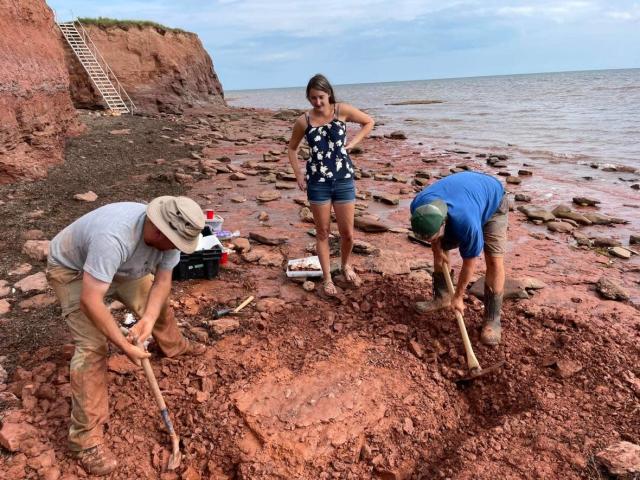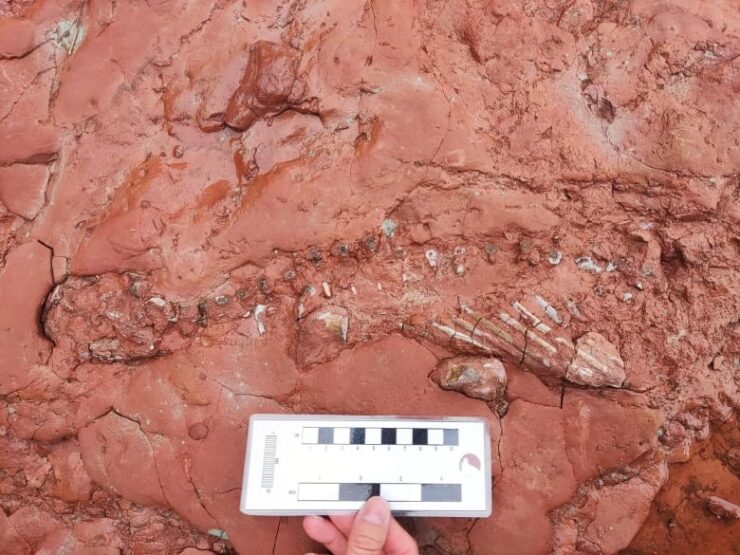Lisa Cormier was walking down the beach at Cape Egmont on Monday afternoon when she noticed something peculiar partially buried on the beach. “I saw something that I thought was a root, and when I looked closer at it, I realized that there were ribs. And then I saw the spine, and the skull.” she said.
Cormier photographed her discoveries in order to share it with her family. The photos were sent to Laura McNeill of Prehistoric Island Tours by her mother-in-law. McNeill immediately contacted Cormier, as well as other specialists.
The geologist and paleontologist John Calder said the fossil looks to date from the Carboniferous period’s close to the beginning of the Permian period. 300 million years ago, roughly. A find like this, according to Calder, who has written a book about P.E.I.’s geological history, is “extremely rare.”
“A fossil like this comes up every 50 years or 100 years” he said. “I mean there’s no real frequency, but it’s rare. And this could be a one-of-a-kind fossil in the tree of life … of evolution of amphibians, to reptiles, to mammals to us.”
The fossil hasn’t been recognized, but according to Calder, it was probably a reptile or at least one of their close relatives. “This is early in the evolution of reptiles from amphibians, and they’re branching out, and so it’s going to be a real puzzle. It’ll take probably a good year to figure out the identity of this thing.” he said.



Few specimens from that time period have been found, according to him, and it might even be a new species.
According to CBC News report, after a few days of work, an excavating team comprised of Matt Stimson, Patrick Brunet, and Linda Berko was able to get it out. The fossil was carefully transferred by Parks Canada employees on Saturday from its finding site to a Greenwich building that has served as a de facto paleontological repository.
It won’t be there for very long, according to Calder, because it needs to be sent to a paleontology lab to be examined by specialists. “They’ll probably use a CT scan.”
Calder said fossil finds like this one in P.E.I. have become more frequent in the last couple of years. He advised Islanders to keep a look out. “There are a lot more everyday people out there walking the beaches than there are paleontologists and most of these important discoveries are not made by scientists.”
Lisa Cormier described the discovery as a once-in-a-lifetime opportunity to leave a legacy in the history of science. “To think that I found something that might be 300 million years old, it’s incredible, I think it’s gonna be a one time [thing], but I’ll continue my walks and I’m going to continue to look for sea glass and maybe I’ll find something else.”
